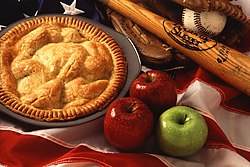Description
With its diversity of seafood from the coastal estuaries, its concentration of wealth in Charleston and Savannah, and a vibrant African cuisine influence, Lowcountry cooking has strong parallels with New Orleans and Cajun cuisine.
The lowcountry includes the coastal regions of South Carolina and Georgia. There is a difference of opinion as to what exactly the South Carolina Lowcountry encompasses. The term is most frequently used to describe the coastal area of South Carolina that stretches from Pawleys Island, South Carolina to the confluence of the Savannah River at the Georgia state line. More generous accounts argue that the region extends further north and west, including all of the Atlantic coastal plain of South Carolina and Georgia. The geography is a critical factor in distinguishing the region's culinary identity from interior areas of the South.
The rich estuary system provides an abundance of shrimp, fish, crabs, and oysters that were not available to non-coastal regions prior to refrigeration. The marshlands of South Carolina also proved conducive to growing rice, and grain became a major part of the everyday diet.
This page is based on this
Wikipedia article Text is available under the
CC BY-SA 4.0 license; additional terms may apply.
Images, videos and audio are available under their respective licenses.




